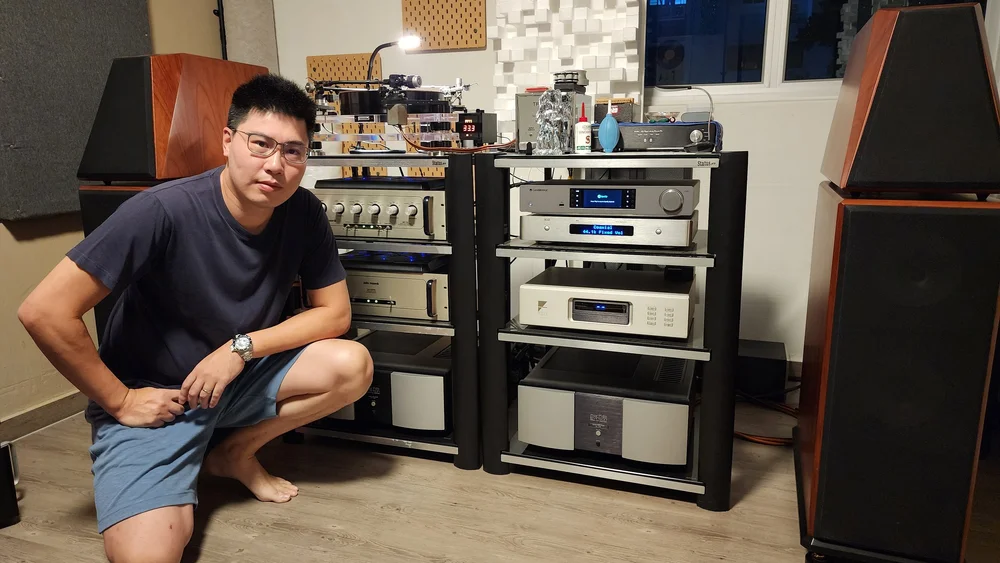
Remember how I said that Ciprian from Bucharest, Romania, was the furthest person from us geographically to be featured in our “No, I have the best system in the world!” column? Well, no longer! Two days after I published Ciprian’s piece, I received an email from Tim Lim from Singapore who asked if he and his system, of which he included a photo, could also be featured. Well, of course, I thought—that’s the whole point of this exercise. As long as I can communicate sufficiently with guests to conduct an interview, “No, I Have the Best System…” is a showcase for audiophiles all over the world to share their systems and audiophile experiences, and, in the process, entertain and inform other hobbyists.
Knowing very little about Singapore, I looked up just how far it was from where I live in Montreal, Canada. Turned out there was a twelve-hour difference between us, compared to Bucharest’s seven hours. That made Singapore our new long-distance record. It also made finding a mutually convenient time for our Zoom chat difficult to do (no, I didn’t fly to Singapore to conduct the interview—I wish!). We had a slim window of time in which to connect for an hour or so.
But connect we did, organizationally-speaking, but also as audiophiles. As I discovered with Ciprian, it doesn’t matter how far apart we live from each other, when it comes to audio, audiophiles are all the same. We speak the same language. We like the same nerdy audio stuff. Our hobby is like instant coffee, except when you mix audiophiles together, you don’t make coffee, you make friends. Sure, it’s corny, but it makes my metaphor no less true.
Tim’s audio journey started at age 15 when he inherited his dad’s 5-channel Pioneer VSA-9500 receiver, KEF Coda 7s, and JBL surrounds. “I set it up and listened to Backstreet Boys. I liked it. But my friend came over and said, ‘Why are you listening to this crap? You should be listening to 2-channel audio. It sounds better, and has more bass!’”
“He invited me to listen to his dad’s system, which was my first encounter with high end audio, and included, from what I remember, Audio Research gear, including an SP-10 preamp and a Rogue amp. But I wasn’t able to appreciate it. Concepts like tonality, imaging, soundstaging weren’t familiar to me. I was, however, impressed with the ‘pilot cockpit’ appearance of all that gear, due to the variety of the electronics and the complexity of the setup.
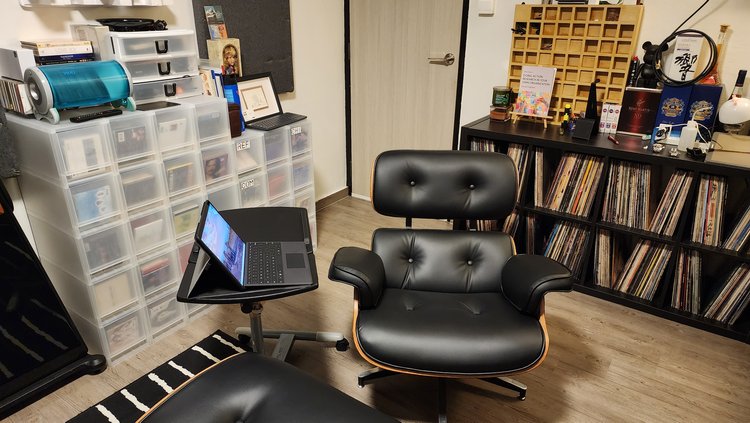
“I was also impressed by the quantity of bass two tower speakers could produce, without a subwoofer. I didn’t think speakers could go that low without subs. And I was intrigued by his father’s statement that adding a subwoofer would not sound natural. If I remember correctly, he was using a pair of Platinum Audios, or AADs.
“At 18, with my first paycheck I replaced my Pioneer amp with a Vincent one, followed by a NAD one, then one by Parasound. It’s when I discovered that changing equipment had an impact on the sonic character of the whole system. A different amp will make the system sound this way, different speakers that way.
“A bad influence in my journey was a dealer who kept pushing products on me, even when I couldn’t afford them. He’d say, ‘Don’t worry about it, give me back that amp or those cables for credit and you can pay me the difference in instalments’.
“That got me into a 20-year cycle of constantly changing and upgrading my equipment.”
Did he manage to realize a lot of actual upgrades in sound during that period?
“It was back and forth. Sometimes I’d get a jump in improvement, on a scale of 1 to 10, of 5, then with the next purchase it dropped 3 points, after that, it went up 2. It was frustrating. If sound quality is the objective, upgrading too often causes you to make mistakes.”
I ask if Singapore has a hi-fi show.
“We just had it. It’s called ISSE, for International Sight & Sound Exhibition. The dealers in Singapore rent a hotel and demo their best setups. This year featured products by McIntosh, Børresen, Karma, Revel.”
There’s also a growing pool of audiophiles in Singapore, a city-state where almost 80% of its population of 5.5 million people lives in public housing. But as Tim explained it: “In some countries, public housing is considered low-income housing. But in Singapore, low-, middle-, and ‘entry into’ high-income families and individuals all live in public housing.”
Public housing consists of Build-To-Order (BTO) one-, two-, and three-bedroom flats. All BTOs are like “LEGO” blocks and employ PPVC (Precast, Prefabricated, Volumetric, Construction). Rooms are built off site then delivered on site and stacked up. Unless you belong to the richest segment of the population that can afford an actual house, every Singaporean lives in a high-rise. But it’s government paid.
In Singapore, children don’t move out of their parents’ home until they marry and have applied for a BTO from the government. That means that by the time they move out, they’re in their late twenties or early thirties. Here’s something to consider in the context of our hobby: If a family has two children, then all the bedrooms in a three-room BTO will be occupied.
Tim has one child, and as such uses his spare room in his 3-bedroom BTO as his hi-fi room—having a dedicated room for his hi-fi was a prerequisite for Tim when he left his parents’ home. Tim also has an advantage in that apartments over the years have gotten smaller and smaller. His home, built in the early 80s, is big—1150 ft² compared to today’s approximately 960 ft²-sized homes. Rooms now measure 3m (9.8′) x 3m (9.8′), while Tim’s listening room is 3m (9.8′) wide and 4.7m (15.4′) long. His speakers are placed along the short wall.

I asked about the AC power in his listening room.
“I renovated my flat, and when I did I had installed thick-gauge Belden cabling and a dedicated AC power line in my listening room. To eliminate EMI noise, my system is also plugged into an isolation transformer.
“There’s another tweak I recommend and it’s not expensive. It’s called a Greenwave power filter. You plug it into the wall and it cleans up the power. For example, I have a noise analyzer, which I use to measure the EMI noise in the power line. When I plugged it into one of the AC receptacle sockets, it gave a noise reading of 350mV. When I plugged in the Greenwave filter next to it, the noise reading dropped to about 18. I use three Greenwaves.”
I ask about the evolution of his tastes in sound reproduction over the years.
“In my early twenties, I concentrated on impact and punch. In my mid-twenties, I wanted thick, rich vocals; in my late twenties, I wanted extended highs. And in my thirties, which is where I am now, I want a full-blown presentation, with good soundstage projection and extension beyond the speakers, along with the earlier qualities I wanted in my twenties. I reached these levels by upgrading my equipment not just to get better sound, but to sculpt the sound to meet my shifting priorities.”

“So you’re happy with the sound you have now?” I asked.
“Yeah. There’s nothing else now that I feel I need to discover or try. Except maybe a 15″ subwoofer that can give that super deep bass.”
What did he like best about the hobby?
“Discovering an upgrade in my system’s sound,” he said. “It doesn’t have to be because of a product upgrade. It could come from changing the speaker placement, which is what I did after I’d visited a dealer whose speakers were placed far from the front wall, about 6′. That setup had the effect of projecting a very deep soundstage with precise imaging, even though the speakers were fed by a low-powered amp.
“Of course, you need to have a room big enough to place speakers so far from the wall, so I did what I could with what I had, to get as close as possible to the imaging and projection I heard at the store. A good thing about my speakers is their ambient rear-firing tweeters. They project back, to a degree, which enhances backward projection.
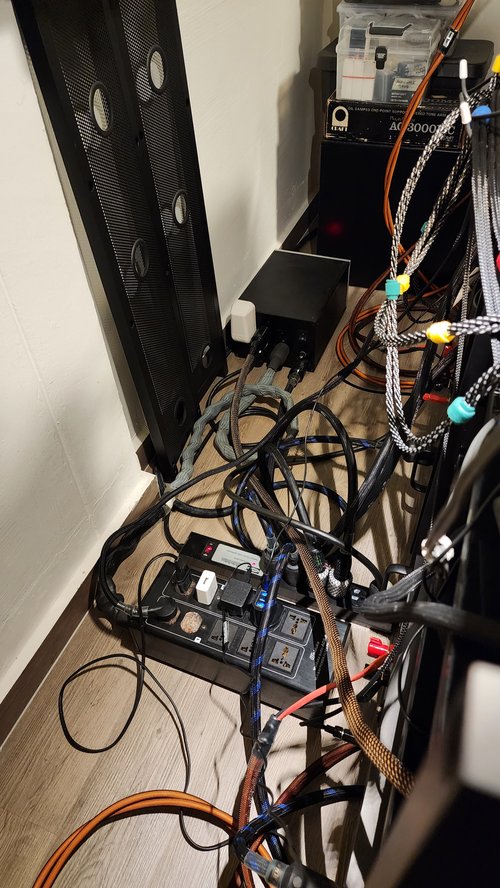
“My speakers have a woofer module with two 8 ½” woofers that deliver bass below 25hz. That’s something else I realized lately, that I prefer full-range speakers that don’t need a subwoofer to deliver the extra low-end bass. Full-range speakers sound more full-bodied than a speaker-sub combination.”
The biggest lesson he’d learned so far?
“Always buy something you can resell easily. Because the journey—the buying and selling, buying and selling—requires cash flow. Don’t go for products that are too niche.”
A favourite tweak or two?
“Use good tubes in your tube equipment. I was shocked when I changed the Philips tubes in my Audio Research SP-10 for Siemens ones. It made a huge difference. Of course, the Siemens were much more expensive.
“Another tweak that worked for me was changing the feet under the speakers. These lifted my speakers so the tweeters were more level with my ears, which improved the music’s sense of scale. The feet also helped with bass control.”
The component that elicited the biggest “wow” in his system?
“The Audio Research preamp.”
His answer took me aback. “I expected you to say your speakers” I said.
“No. My speakers are very good, but it was the preamp that was the biggest revelation, for its 3D imaging, soundstage, bass, and details. For the best 3D effect and soundstage, I recommend a tube preamp over a solid state one.”
Tim’s pictures revealed that he was a proponent of room treatment. What about cables?
“They’re important,” he said. “For interconnects, I recommend using silver cables. Silver is a better conductor than copper.”
What about claims that silver cables tend to sound bright?
“The trick is to use solid core silver, not plated. There’s a big difference.”
If he had to choose between analogue and digital?
“Analogue, for two reasons,” he said. “In Singapore, if you don’t play those exotic black discs that spin with a needle on it, you’re not a real audiophile. If you say you’re into high-end, you have to play vinyl. Second, the sound, but my vinyl setup is better than my digital one. The SP-10 also has a very good phono stage. I still collect CDs, but I listen to them less and less.”
Any regrets along his journey, things he wished he hadn’t done?
“I regretted selling my Vienna Acoustics Beethoven Baby Grand speakers. I also regret not having saved enough money for when there were opportunities to buy something I really wanted, like the Vienna Acoustics Malher speakers with their two side woofers. Before I could buy them, the store that carried them closed down.”
I asked why he regretted selling the Baby Grands.
“At some point you have to sell in order to buy, instead of buying then selling,” he said. “So I sold the Baby Grands to buy another pair of speakers which ended up not sounding as good—that’s another regret, buying products that made me go backward sound-wise instead of forward. So, I was stuck with worse speakers until I could sell them.”
Looking back, was there a way he could have avoided such a situation?
“With a home audition. Except in Singapore, you don’t get home auditions. If it’s available to you, especially for more expensive equipment, do it, because the product could sound very different in your home than it did at the store, in a different setup.”
Any last words of advice?
“Start by making choice to invest in either a vinyl or digital setup. If you invest in both right away, it’s going to be painful in terms of your wallet and having enough room to put all your equipment.”
Thanks for sharing, Tim, all the way from Singapore.
Tim’s system (all prices in Singapore dollars [S$1 = CAD$1 = US$.75]):
- Source
- Vinyl Playback
- FFYX TB-25 MK3 Magnetic Levitated Turntable – $1,600
- Audiocraft MC-3000 Tonearm with Ortofon SL-20E – $1,100 + $500
- Audiomod Series 3 Tonearm with Denon DL-103 / Dynavector DV-20X2 Low Output – $1,400 + $1,300
- Triangle-Art Titan Step up Transformer – $2,200
- Rega RB-300 with Ortofon 2M Blue – $900 + $350
- FFYX TB-25 MK3 Magnetic Levitated Turntable – $1,600
- Digital Playback
- Ayre CX-7e – $2,800
- Cambridge Audio CXN-V2 – $1,800
- NAD M51 DAC – $1,500
- Vinyl Playback
- Pre-Amplification
- Audio Research SP-10 – $5,500
- Amplification
- Mark Levinson No. 436 Monoblocks – $14,000 (pair)
- Speakers
- Von Schweikert Audio VR4 SR MK3 – $16,000 (pair)
- Cables and Accessories
- Isolation transformer balanced of 3kVA of power supply to all equipment – $900
- All mains/power transmission using Monster Signature 400, locally assembled.
- All signal transmission using pure silver multi strand locally made cables.
- Speaker bi-wired as suggested by the speakers’ user manual made locally using pure copper from Germany.
- All cables (interconnects, speaker cables, power cables) approximately $2,000
- Amari KW220 vacuum suction vinyl cleaner – $500
- Humminguru ultrasonic vinyl cleaner – $650
- Isolation transformer balanced of 3kVA of power supply to all equipment – $900
If you have a system you’d like to talk about in our “No, I have the best system in the world!” series, let us know by dropping us a line here.
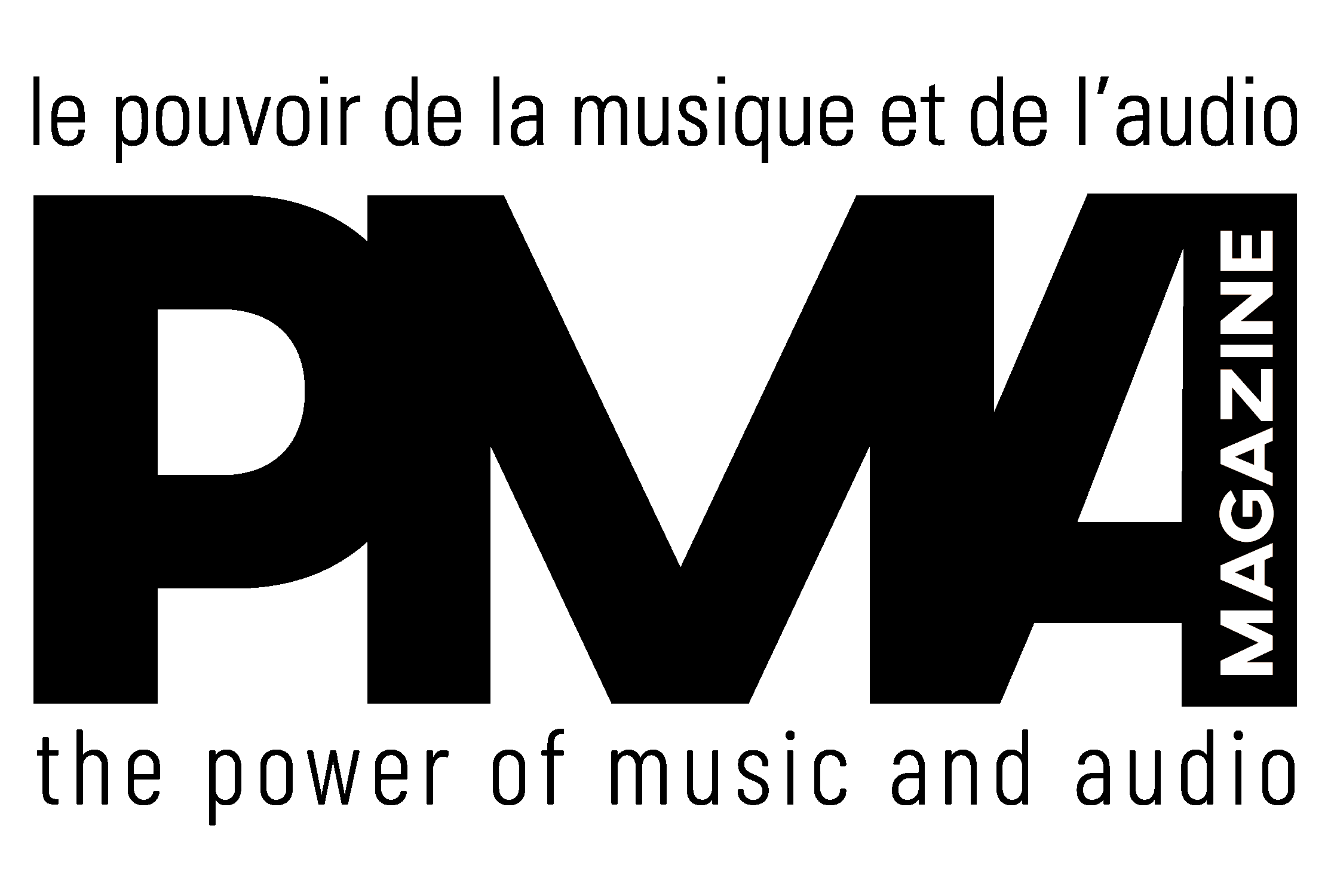





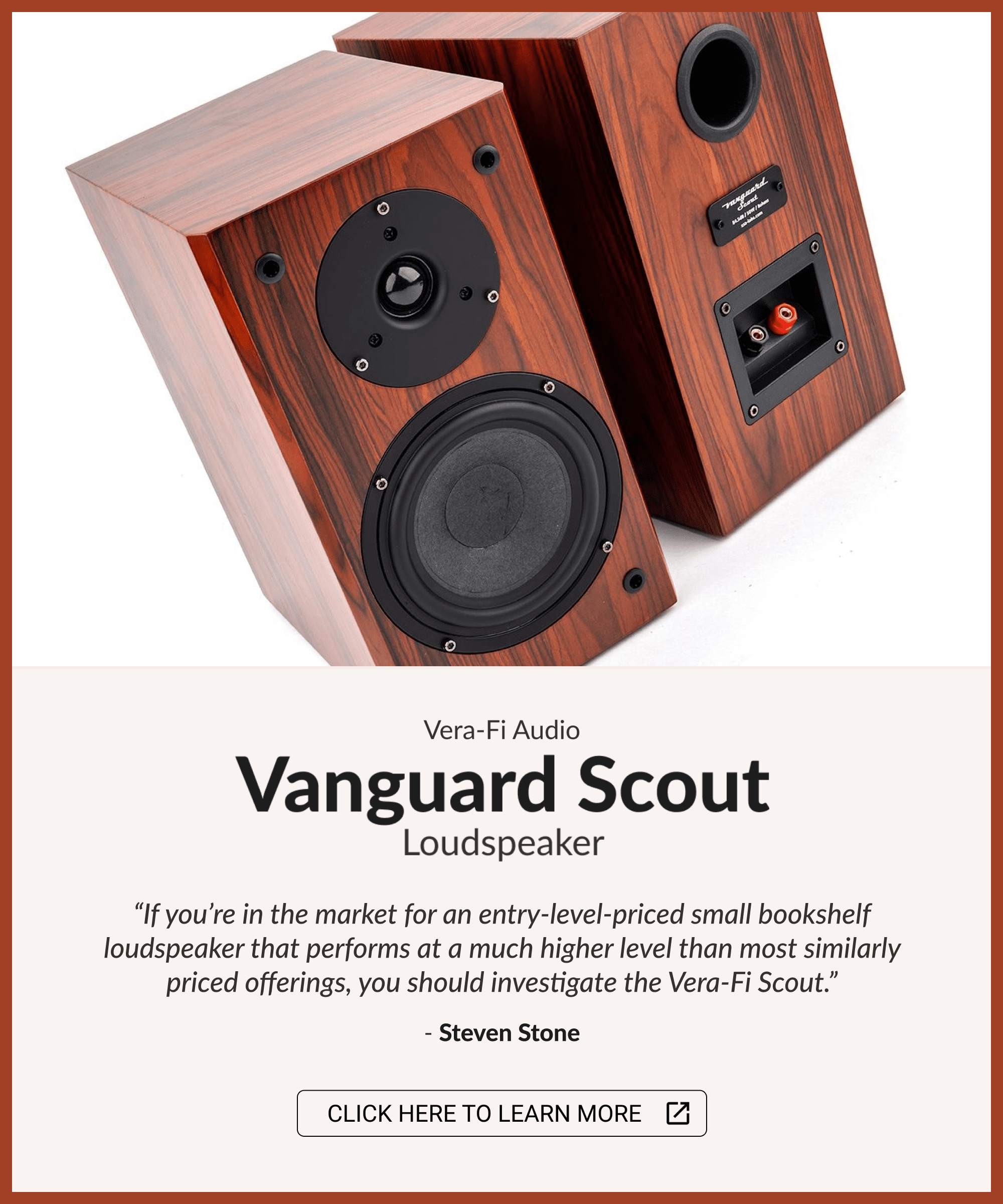









Leave a Reply